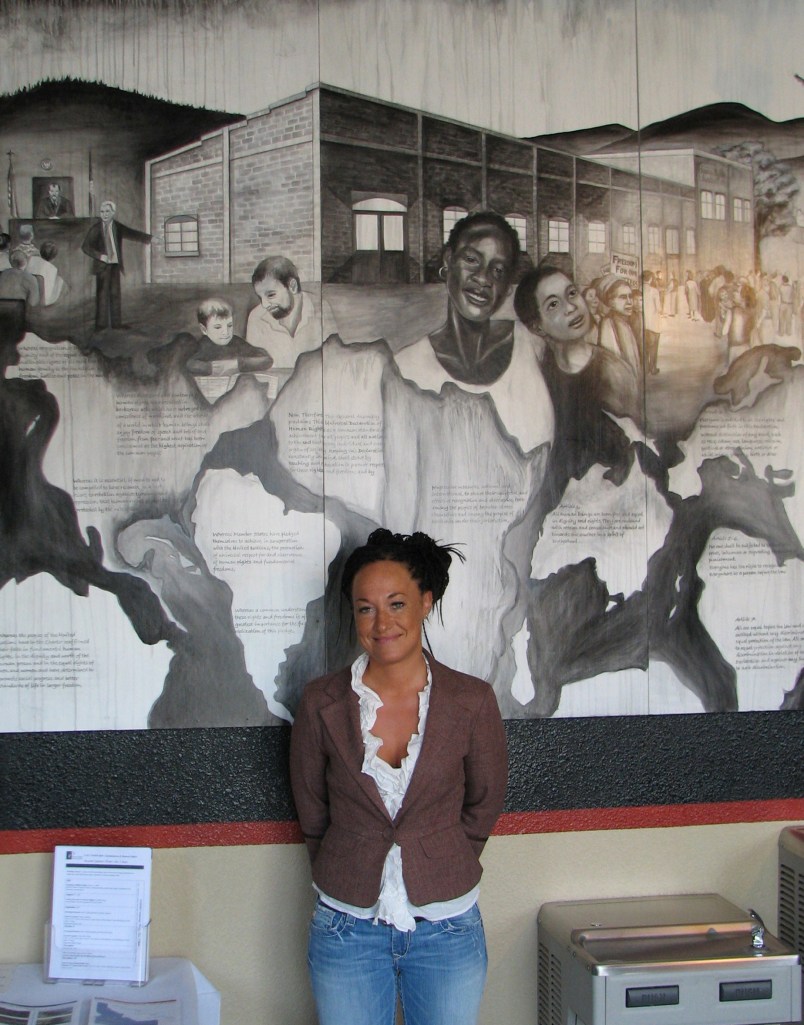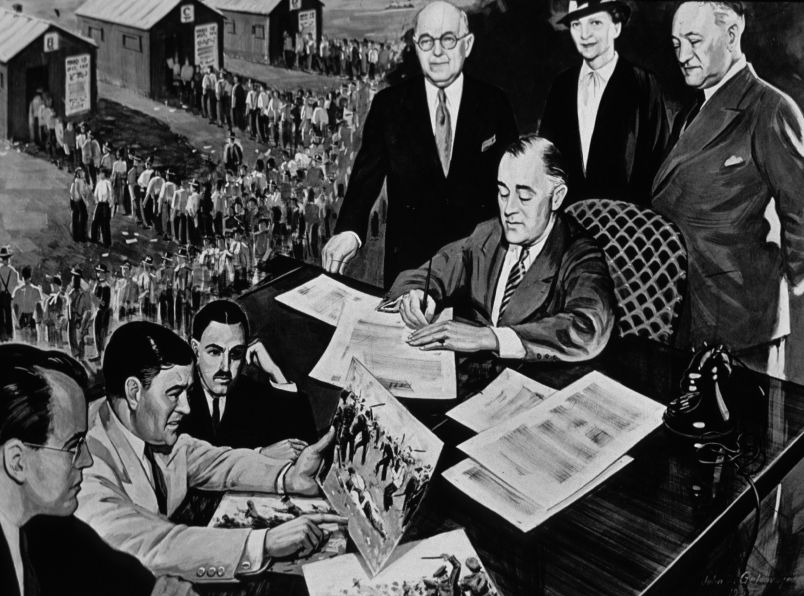Welcome to the future. A time when you can use technology to edit anything about yourself—your location, occupation, status, style, face and even your race. While some people grow accustomed to the sights and sounds of diversity and the ideal of equality, others experience “wrong skin,” significant discontent with the racial identities they’ve been assigned at birth and the stereotypical roles associated with those racial identities. NAACP spokesperson and Africana Studies professor Rachel Dolezal may be among the latter group. If that’s true, her story has much to teach us about how race looks and feels in our techno-driven world.
Historically, racial discontent has been expressed as “passing,” the act of representing yourself successfully as a member of a different group than the one to which society says you belong in order to avoid discrimination. Nowadays passing is an act bound only by the limits of imagination and technology. It’s like airbrushing in Photoshop. We can say that passing is all about who has the airbrush and who has the latest version of Photoshop. Today skin tone, hair texture, derrière size and facial features can all be changed through cosmetic procedures and photo filters for no discernable reason. (Just ask a Kardashian.) This kind of technological engineering reveals a longstanding paradox: Biological race does not really exist but it adds real layers of social meaning and political value to human experience.
So, was Dolezal’s racial passing technologically engineered or was it just an offline effort promoted by social media? Sure she “talks the talk,” saying she’s partly black (also claiming white and Native American identities) and speaking out in support of civil rights. But she also uses technology to “walk the walk.” Dolezal appears to be tanning her skin, applying contouring makeup, and either treating her hair or wearing a textured wig or head wrap.
But even these efforts would fall flat without the platform provided by communication technology. Dolezal’s Twitter handle, @HarlemRenaissanc, where she promotes her African and African-American themed artwork, has also been her means of sharing aspects of black culture with the larger public. It’s also a hint toward the fact that she’s passing, since passing was a major topic covered by Harlem Renaissance literature. Her LinkedIn profile highlights her social justice work and teaching in the area of racial and ethnic studies. Her Facebook profile, also hinting at passing, both reveals and conceals more intimate aspects of her identity with a profile picture in which long dreadlocks cover her face. Technology allows us to present ourselves as we want to be seen rather than as how others see us. But that same technology can destroy us when people discover and police the boundaries between how we present ourselves and how they see us.
The immediate, technologically-fueled response to label Dolezal’s passing “crazy” exposes society’s racism; the assumption is that since no one in her right mind would choose to be black, she must be a head case. The “crazy” label also signals the moral cost we all pay for public shaming. See Twitter’s #AskRachel meme for thousands of examples of dismissal and disrespect. While entertaining, such responses are the easy way out because they keep us from asking and answering more productive questions. Questions like: Why is identity considered an editable “profile” anyway? Do you have to be a person of color to care and advocate for people of color? Does passing make you a coward, a minstrel or a winner? Are there benefits to being perceived as black? Is anyone’s identity, racial or otherwise, 100 percent authentic 100 percent of the time? And the real doozy: Why do we try to get beyond race by clinging to the idea that race is real?
We can’t have it both ways. What we can have is an opportunity to learn more about some of the dilemmas of identification and representation in our nation right now. Clearly, Dolezal’s case of racial passing promotes domination and resistance. But that’s also exactly what race itself does. It’s like my favorite sociology professor used to say, “race is so much more than a color. Race is a technology that can be used to make social and political statements, cultural connections and promote ways of being in the world.” For all of us, whose profiles are filtered and statuses are updated by the technology of race, passing should continue to be a critical topic of conversation because it will be a way of life.
Marcia Alesan Dawkins, Ph.D. is the author of Clearly Invisible: Racial Passing and the Color of Cultural Identity, who writes frequently about diversity, technology and creative culture. She’s also a communication professor and obsessive Tweeter who can be followed @drdawkins09.









